What's the best way to build landing pads on the moon?
Wednesday, 11 May 2022 13:19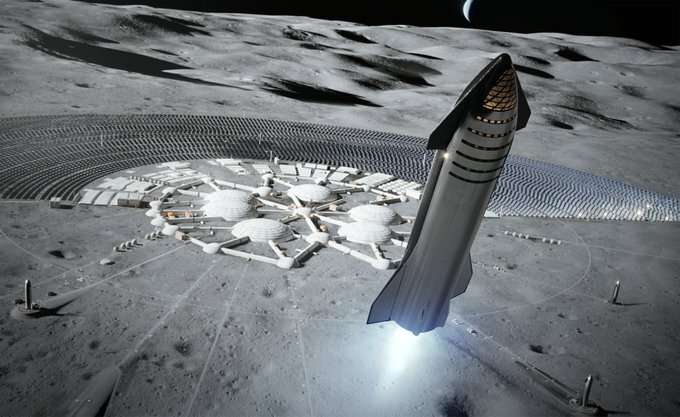
In the near future, NASA, the European Space Agency (ESA), China, and Roscosmos all mount crewed missions to the moon. This will constitute the first time astronauts have walked on the lunar surface since the Apollo era. But unlike the "race to the moon," the goal of these programs is not to get there first and leave only a few experiments and landers behind (i.e., "footprints and flags" missions), but to establish a sustained human presence on the lunar surface. This means creating habitats on the surface and in orbit that can be used by rotating crews.
While NASA and other space agencies intend to leverage local resources as much as possible—a process known as in-situ resource utilization (ISRU)—creating lunar bases will still require lots of materials and machinery to be shipped from Earth. In a recent study, Philip Metzger and Greg Autry reviewed the cost and energy consumption of building landing pads on the lunar surface.
Op-ed | Herding rockets: Improved Space Traffic Management will accelerate industry growth
Wednesday, 11 May 2022 13:16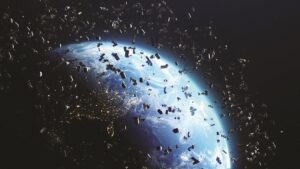
A market ecosystem that incentivizes the rapid development and fielding of advanced Space Traffic Management (STM) technologies will be a key enabler to the sustainable growth of the space economy.
The post Op-ed | Herding rockets: Improved Space Traffic Management will accelerate industry growth appeared first on SpaceNews.
Connecting the Dots | Freeing speech from space: Satellite operators under pressure to squelch propaganda
Wednesday, 11 May 2022 11:29
As Elon Musk’s plan to take over Twitter ignites free speech debates on and off the social media hub, satellite operators face similar editorial questions amid Russia’s war in Ukraine.
The post Connecting the Dots | Freeing speech from space: Satellite operators under pressure to squelch propaganda appeared first on SpaceNews.
Vega-C stacks up for inaugural flight VV21
Wednesday, 11 May 2022 11:08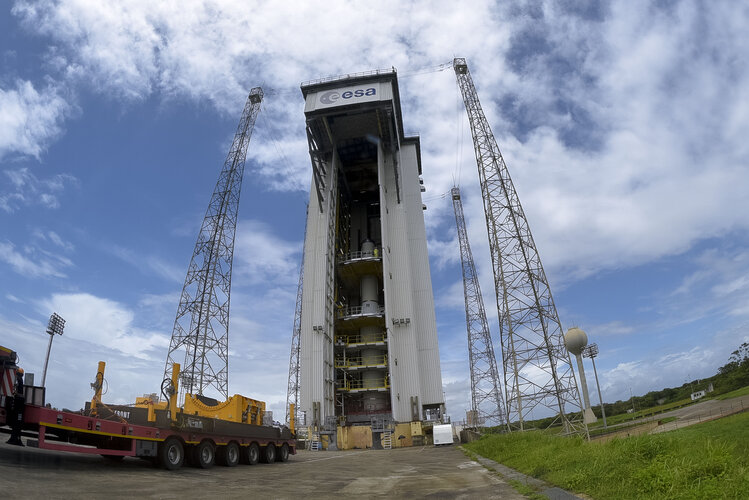
Preparation for VV21, the inaugural flight of ESA’s new Vega-C rocket, continues at pace with integration of the Zefiro-9 solid-fuel third stage.
Colombia signs Artemis Accords
Wednesday, 11 May 2022 10:49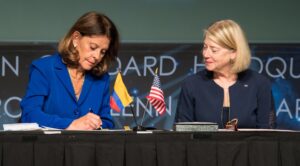
Colombia signed the Artemis Accords for responsible space exploration May 10, continuing a steady stream of countries that have acceded to the agreement.
The post Colombia signs Artemis Accords appeared first on SpaceNews.
Eyes on the Arctic: Satellites reveal changing conditions at northern latitudes
Wednesday, 11 May 2022 10:17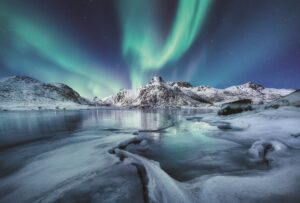
As Arctic sea ice dips to new lows, economic activity in the region is picking up. To track the changes, companies and academic researchers often turn to satellite-based data products.
The post Eyes on the Arctic: Satellites reveal changing conditions at northern latitudes appeared first on SpaceNews.
Electric vehicle company with NASA contract issues financial warning
Wednesday, 11 May 2022 10:10
The electric vehicle company that recently won a NASA contract to provide a modern version of the “Astrovan” to transport Artemis astronauts to the launch pad warned May 10 it may soon run out of money.
News Conference with ESA Astronaut Matthias Maurer (in German)
Wednesday, 11 May 2022 09:45 Video:
00:54:47
Video:
00:54:47
After almost six months of living and working on board the International Space Station, Matthias Maurer is back on Earth - and gives his first news conference in Europe.
Watch the replay of this live Q&A (mostly in German language) between Matthias and the press, taking place at the ESA’s European Astronaut Centre (EAC) in Cologne, Germany.
Orbex reveals first full-scale microlauncher rocket developed in Europe
Wednesday, 11 May 2022 08:36 Orbex has unveiled the first full-scale prototype of the Prime orbital space rocket on its dedicated launch pad publicly for the first time.
The unveiling of the first of a new generation of European launch vehicles - designed to launch a new category of very small satellites to orbit - represents a major step forward for the British rocket company as it prepares for the first ever vertica
Orbex has unveiled the first full-scale prototype of the Prime orbital space rocket on its dedicated launch pad publicly for the first time.
The unveiling of the first of a new generation of European launch vehicles - designed to launch a new category of very small satellites to orbit - represents a major step forward for the British rocket company as it prepares for the first ever vertica Warp speed 'Unruh effect' can finally be tested in the lab
Wednesday, 11 May 2022 08:36 A major hurdle for work at the forefront of fundamental physics is the inability to test cutting-edge theories in a laboratory setting. But a recent discovery opens the door for scientists to see ideas in action that were previously only understood in theory or represented in science fiction.
One such theory is on the Unruh effect. When astronauts in a spacecraft undergo super strong accel
A major hurdle for work at the forefront of fundamental physics is the inability to test cutting-edge theories in a laboratory setting. But a recent discovery opens the door for scientists to see ideas in action that were previously only understood in theory or represented in science fiction.
One such theory is on the Unruh effect. When astronauts in a spacecraft undergo super strong accel Keeping time with the cosmos
Wednesday, 11 May 2022 08:36 Various technologies, networks and institutions benefit from or require accurate time keeping to synchronize their activities. Current ways of synchronizing time have some drawbacks that a new proposed method seeks to address. The cosmic time synchronizer works by synchronizing devices around cosmic ray events detected by those devices. This could bring accurate timing abilities to remote sensin
Various technologies, networks and institutions benefit from or require accurate time keeping to synchronize their activities. Current ways of synchronizing time have some drawbacks that a new proposed method seeks to address. The cosmic time synchronizer works by synchronizing devices around cosmic ray events detected by those devices. This could bring accurate timing abilities to remote sensin Unpacking black-box models
Wednesday, 11 May 2022 08:36 Modern machine-learning models, such as neural networks, are often referred to as "black boxes" because they are so complex that even the researchers who design them can't fully understand how they make predictions.
To provide some insights, researchers use explanation methods that seek to describe individual model decisions. For example, they may highlight words in a movie review that inf
Modern machine-learning models, such as neural networks, are often referred to as "black boxes" because they are so complex that even the researchers who design them can't fully understand how they make predictions.
To provide some insights, researchers use explanation methods that seek to describe individual model decisions. For example, they may highlight words in a movie review that inf Satellite eyes pinpoint waste from space to reduce ocean pollution
Wednesday, 11 May 2022 08:36 A cutting-edge new tool developed by Minderoo Foundation has identified thousands of waste sites across 25 countries for the first time using advanced satellite data technology and machine learning to measure piles of plastic waste from space.
Global Plastic Watch (globalplasticwatch.org) is a tool which combines earth observation with artificial intelligence to create the first-ever near-
A cutting-edge new tool developed by Minderoo Foundation has identified thousands of waste sites across 25 countries for the first time using advanced satellite data technology and machine learning to measure piles of plastic waste from space.
Global Plastic Watch (globalplasticwatch.org) is a tool which combines earth observation with artificial intelligence to create the first-ever near- Identifying global poverty from space
Wednesday, 11 May 2022 08:36 Despite successes in reducing poverty globally in the last two decades, almost one billion people are still living without access to reliable and affordable electricity, which in turn negatively affects health and welfare, and impedes sustainable development. Knowing where these people are is crucial if aid and infrastructure are to reach them. A new IIASA-led study proposes a novel method to es
Despite successes in reducing poverty globally in the last two decades, almost one billion people are still living without access to reliable and affordable electricity, which in turn negatively affects health and welfare, and impedes sustainable development. Knowing where these people are is crucial if aid and infrastructure are to reach them. A new IIASA-led study proposes a novel method to es China's cargo craft docks with space station combination
Wednesday, 11 May 2022 02:48 In the latest stage in its space station program, China launched the Tianzhou 4 cargo spacecraft early on Tuesday morning, to transport fuel and supplies to its Tiangong space station, according to the China Manned Space Agency, or CMSA.
In a brief statement, the agency said that a Long March 7 carrier rocket blasted off from the Wenchang Space Launch Center in Hainan province at 01:56 am,
In the latest stage in its space station program, China launched the Tianzhou 4 cargo spacecraft early on Tuesday morning, to transport fuel and supplies to its Tiangong space station, according to the China Manned Space Agency, or CMSA.
In a brief statement, the agency said that a Long March 7 carrier rocket blasted off from the Wenchang Space Launch Center in Hainan province at 01:56 am, 
